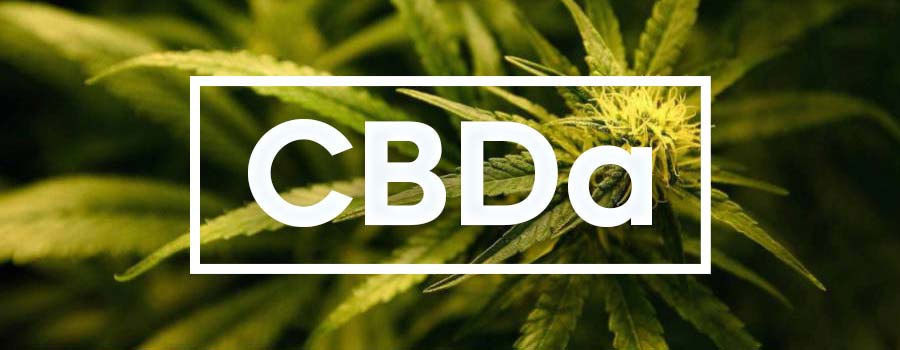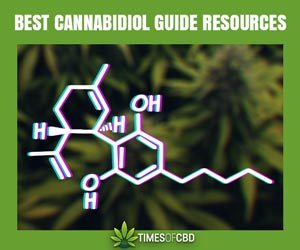Medical Research
Cannabidiolic Acid (CBDA): A Beneficial Guide to this Cannabinoid Compound

While cannabis has been around for a really long time, first known use was around 3,000 BC, and largely ridiculed by the western world, new research and scientific studies have emerged to change people’s perspective.
More specifically, there’s a lot more focus on its chemical, and healing properties. While the pioneering research largely focused on cannabinoids like CBD and THC, recent research has shed a lot more light on other constituents of the plant.
These constituents in the form of terpenes, proteins, PUFA and fiber provide additional health benefits. This includes one of the lesser known compounds found in cannabis called Cannabidiolic Acid (CBDA).
So What is Cannabidiolic Acid (CBDA) and How is it Different from CBD?

This compound is closely related to cannabidiol (CBD). In fact, it’s often considered the parent compound of CBD. This is because CBD is often a by-product of chemical reactions involving CBDA.
This chemical reactions are usually sped up by the application of heat. While it does happen naturally, without any external factors such as heat, the reality is that it takes longer.
This is why you get the near instant benefits when you heat up cannabis and smoke it, add it as spice to your meals or inhale through a vaporizer. The process actively triggers the production of CBD and THC.
CBDA’s molecular structure is slightly different from that of CBD. It’s often easy to confuse the two because they’re structurally similar. But a closer look reveals the extra COOH group in CBDA. So, CBD = CBDA – extra COOH.
CBD is more popular than CBDA because not much research has been done about the compound. As a result, you have more research funding and papers being published around CBD. But, that doesn’t mean that CBDA isn’t powerful in its own way.
In fact, the meager research that’s been conducted on the compound indicates that it’s a pretty solid powerhouse by itself.
Benefits of CBDA
Even with the thin research carried out on CBDA, we’re seeing some pretty incredibly benefits. Let’s examine them.
Cancer and CBDA
Researchers Takeda et al, studied the compound and determined that it has great potential for fighting cancer; breast cancer more specifically. Its key function in the experiments indicated that it helped inhibit cancer cell metastasis.
As a result, the cells were only confined to one location, and didn’t have the ability to spread to other organs in the body. It did this by simply inhibiting the expression of the cyclooxygenase-2 (COX-2) enzyme.
This enzyme is highly expressed in women with breast cancer, and has been linked to 40 percent of breast cancer cases. While it was inhibiting the expression of cyclooxygenase-2 (COX-2), CBDA was balancing that by increasing the expression of the SHARP1 gene (BHLHE41).
This gene has been known to counteract and inhibit the spread of breast cancer cells. This makes it a potentially powerful means of improving the odds of breast cancer survival among women who are diagnosed with the condition.
Might Help With Inflammation
While there are no studies of CBDA’s impact on inflammation, its current properties makes it look like a great candidate for countering inflammation in the body.
This is due to its ability to inhibit the expression and activity of COX-2. Most anti-inflammatory medications function by largely inhibiting the same enzyme.
This is why it might be a good solution to this problem. In fact, based on its mode of operation, the reality is that it might actually be more effective than THC in easing inflammation, joint pains and providing relief to people suffering from arthritis.
Could Help With Nausea
The impact of CBDA on easing nausea and vomiting has been studied extensively. It’s a very effective antiemetic compound.
Studies around this include the one by Bolognini et al, who tested CBDA’s effects on relieving motion-induced and toxin vomiting in shrews. They also found that it reduced instanced of vomiting in rats.
Based on these studies, there are indications that CBDA might even be more effective at nausea relief than CBD itself. While these studies are by no means conclusive, the reality is there’s need for more research on CBDA and nausea relief or prevention.
Where to Find CBDA
If you’re interested in exploring and experimenting with CBDA, just check out unprocessed cannabis plants. As long as a cannabis plant hasn’t been smoked, boiled or processed, it has decent amounts of CBDA.
Just check the leaves, flowers and stems of the plant, and you’ll find it. Taking the compound can be as simple as blending cannabis leaves or flowers them with your smoothie or adding them to your juice.
Some strains have higher CBDA content than others. These include
- Charlotte’s Web
- AC/DC
- Ringo’s Gift
- Sour Tsunami
- Harlequin






